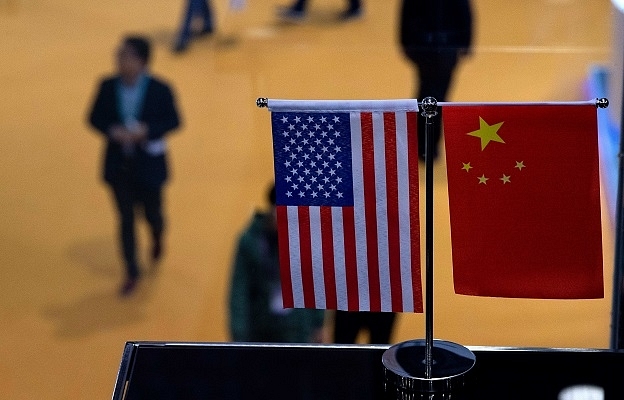
Everything That Can Go Wrong: 11 Years After ‘Lehman Brothers’, Global Economy Staring At Similar Tipping Points
It’s been 11 years since the day Lehman Brothers filed for bankruptcy.
However, even today, there are events which can push the global economy into a slowdown. Here are five such dangers.
11 years ago, on 15 September, one of Wall Street’s biggest investment banks, Lehman Brothers, filed for bankruptcy. The fall of Lehman Brothers and the sale of another Wall Street giant, Merill Lynch, to Bank of America resulted in Dow falling by 4.4 per cent and S&P 500 falling by 4.7 per cent.
However, it was not the plunging stocks that threatened the world economy that week, but the lack of credit.
Financial institutions were wary of lending to each other, not merely in the United States, but across the world. In that week, the federal-funds rate was as high as 6.5 per cent. The interest rate for London interbank lending jumped to 3.1 per cent from 2.4 on the same day.
Under the Troubled Assets Relief Program (TARP) of the United States, the Capital Purchase Program (CPP) was announced which assured an injection of up to $250 billion in troubled banks. In November 2008, $115 billion was injected into nine banks to expand credit and lending to businesses.
The US Treasury, in return, bought a considerable amount of stock in these banks with non-voting rights. Eventually, the Treasury made a considerable profit on these investments as the stock prices of the bank were driven upward from their lows of September 2008.
Interestingly, earlier this month, the Chinese economy had a similar moment when it lowered the threshold for the amount of reserves banks are required to hold, thus increasing their ability to lend by $126.4 billion. The world, however, barely noticed.
Across the world, smoke can be seen across numerous economies in the form of interest cuts, ease of lending, export and retail boosts, and reduction in taxes, but where’s the fire that is causing this smoke?
From a slowdown in critical industries like auto to political fall-outs, 11 years later, the global economy is dreading its next ‘Lehman Brothers’ moment, but where could it come from?
Firstly, there is the ongoing trade war between the United States and China. While the previous few days have witnessed the ease of tensions between the two superpowers with China easing tariffs on US imports and the White House delaying their 1 October tariffs on account of the holiday season, it will all boil down to the negotiations next month.
Assuming the worst, if the trade talks go south, it could result in considerable volatility in the world markets as leading manufacturing companies in the US may be required to move their supply chains outside China. The fallout of a trade war will also have replications in the Korean peninsula, thus threatening markets in Japan and South Korea.
Two, there is a risk of political fallout in Hong Kong. The SAR (Special Administrative Region) has a GDP equivalent to 3 per cent of China’s and is the latter’s window to the world with leading companies setting up shop in the city. A political annexation in the aftermath of the ongoing protests could drive volatility across world markets.
Three, a no-deal Brexit before or on 31 October, the current deadline. Companies across the United Kingdom in the manufacturing sector have voiced concerns against a hard Brexit as many depend on raw imports from Europe for their production.
Also, there is the question of companies that export their finished goods to Europe. A no-deal Brexit would bring volatility in the form of tariffs, delayed negotiations, and an economic impasse.
Four, the brewing trouble within the Eurozone. While Germany’s contraction of industrial production has had an impact on the exports of the country, it is also dragging down the Eurozone alone, even when Spain and France have shown little improvement in their production.
In 2019, more economies across the world reported contraction than expansion.
Lastly, the trouble in the Middle East. While the four-year war in Yemen between the Houthi rebels, backed by Iran, and the Yemeni military, backed by Saudi Arabia (and the US and Israel), has unleashed a crisis, it is the energy supply that has the world worried.
Yesterday’s drone attack on the Aramco Abqaiq facility in Saudi Arabia amplified these fears.
The attack, claimed by the Houthi rebels, impacted about about 5.7 million barrels of crude oil, resulting in Saudi Arabia cutting down its production by half, thus threatening the world oil supply. Together, Abqaiq makes for 10 per cent of the world’s crude oil supply.
The impact of these attacks will have an impact on the energy market along with the planned negotiations between the White House and Tehran. The prolonged proxy war in Yemen not only threatens to derail the Middle East but the entire world economy, as the attack shows.
Also, there are various other fronts for world economies to worry about. The ongoing trade war has added to the domestic slowdown in China. The adverse impact of the trade war and slowing GDP in China could drive demand south, thus hampering production chains across the world.
There are other weaker threats like the underwhelming tech IPOs (WeWork, Uber, Lyft) and the very distant possibility of China dumping US treasuries.
Already, the inversion of the yield curve, a historical precursor of a recession, has forced the markets to wake up and take stock of the situation. With the Fed meeting later this month, more monetary easing is on the cards. However, the risk of an economic and political fallout on any of the above fronts remains.
Eleven years later, Wall Street may have learned its lessons, but leaders of the global economy, clearly, haven’t.